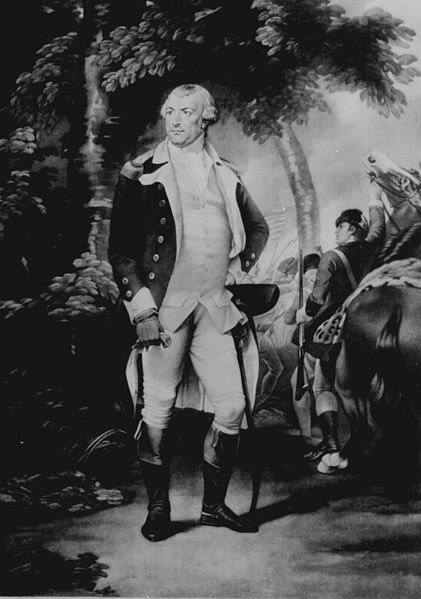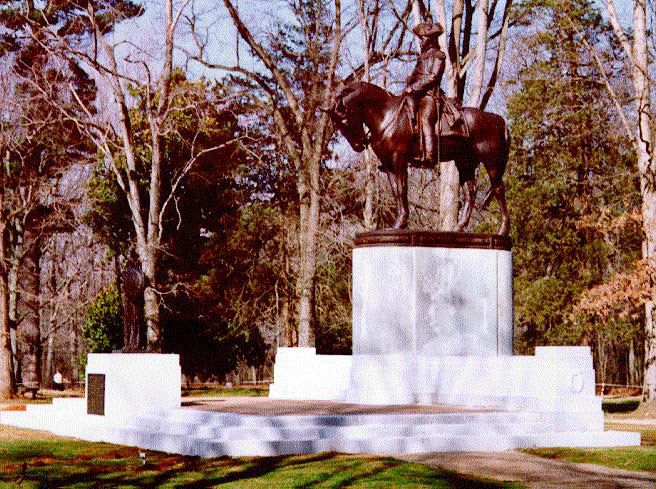 Nathanael Greene became known as one of George Washington’s most reliable officers, but at the start of the American Revolutionary War, he was no more than a private in his state militia. He was, however, rapidly promoted once his tactical acumen became apparent, reaching the heights of major general in the Continental Army by the time final victory was achieved. He was one of just three men – along with Henry Knox and George Washington himself – to serve as a general for the full eight years of the war. Many places in the United States are named in his honor.
Nathanael Greene became known as one of George Washington’s most reliable officers, but at the start of the American Revolutionary War, he was no more than a private in his state militia. He was, however, rapidly promoted once his tactical acumen became apparent, reaching the heights of major general in the Continental Army by the time final victory was achieved. He was one of just three men – along with Henry Knox and George Washington himself – to serve as a general for the full eight years of the war. Many places in the United States are named in his honor.
Early life
Greene was born in Warwick, Rhode Island, in 1742. He was brought up as a Quaker, and in 1770, he moved the short distance to the town of Coventry, where he was to take on responsibilities for the family foundry (his father died shortly afterwards). Greene became involved in politics, being elected as a member of the Rhode Island General Assembly; he had been re-elected three times by 1775, and became known for his sympathy for the emerging Patriot cause. He was married to Caty in 1774.
At about this time, Greene was instrumental in the formation of the Kentish Guards, a local militia. This unit was chartered in October, 1774, and Greene himself enlisted. He had to struggle somewhat to gain acceptance, as he suffered from a noticeable limp. By now he had been expelled from the Quaker movement – it is speculated that his eagerness for military affairs was a factor, and indeed he became increasingly active in this respect, spending much time learning about tactics and serving on a militia committee of the General Assembly.
From Private to Officer
 Greene’s service in the American Revolutionary War began right at its start in May, 1775, at the Siege of Boston, in which Washington’s army surrounded a British garrison and – after almost a year – achieved its abandonment. In response to the siege, the Rhode Island Army of Observation had been formed, and Greene was promoted straight from private to major general, in acknowledgement of his by now considerable tactical knowledge and ability. By June, he had been made a brigadier in the Continental Army itself, and given command of Boston by Washington.
Greene’s service in the American Revolutionary War began right at its start in May, 1775, at the Siege of Boston, in which Washington’s army surrounded a British garrison and – after almost a year – achieved its abandonment. In response to the siege, the Rhode Island Army of Observation had been formed, and Greene was promoted straight from private to major general, in acknowledgement of his by now considerable tactical knowledge and ability. By June, he had been made a brigadier in the Continental Army itself, and given command of Boston by Washington.
His stellar rise did not stop there. In the second week of August, 1776, Greene was appointed a major general in the Continental Army, and he was placed in charge of its troops stationed on Long Island. His choice of location for fortifications is honored today in the name of Fort Greene Park, though at the time it was known as Fort Putnam. Greene did not participate in the Battle of Long Island itself, as he had become seriously unwell, though he was able to resume his duties shortly thereafter.
Greene felt that the correct move for the Continental army would be to withdraw from New York City itself, and to fire the city. He reasoned that this would hurt those who remained loyal to Great Britain, since the bulk of property in the city was owned by Loyalists. However, this plan was never put into effect, as although Washington himself was of a similar mind, Congress could not be persuaded to back the withdrawal and burning. In 1778, Greene was made Quartermaster General by Washington at Valley Forge, but at his own insistence, he also continued as a field commander.
Greene in the South
 By 1780, it was clear that Congress had a problem with the Southern Army’s commanders. Both Savannah and Charleston had been lost, under Robert Howe and Benjamin Lincoln – a distant relative of the man later to be President – respectively. A successful British attack, led by Cornwallis, in August of that year resulted in a disastrous scattering of the Southern Army, and it was clear a new approach was required. At the start of October, Congress opted to allow Washington to decide for himself who was now to command the troops in the South, and he was quick to appoint Greene.
By 1780, it was clear that Congress had a problem with the Southern Army’s commanders. Both Savannah and Charleston had been lost, under Robert Howe and Benjamin Lincoln – a distant relative of the man later to be President – respectively. A successful British attack, led by Cornwallis, in August of that year resulted in a disastrous scattering of the Southern Army, and it was clear a new approach was required. At the start of October, Congress opted to allow Washington to decide for himself who was now to command the troops in the South, and he was quick to appoint Greene.
The military situation in the South was serious. Cornwallis had a superior force, while Greene’s army was inferior not only in strength but also in equipment. Greene’s decision was to split his forces, thus forcing Cornwallis to do the same. The Battle of Kings Mountain on October 7, 1780, was an utter rout – every single member of the British forces was either killed or captured, an almost unheard-of event. Greene decided on a strategic retreat, accompanied by as many as 800 prisoners, to Guilford Courthouse in North Carolina, a policy agreed by his officers.
Greene’s army was pursued by Cornwallis’s forces, but managed to stay ahead of them for the week it took to reach the Dan River. Greene had arranged for a flotilla of boats to be provided to meet his troops there, and hidden close by along the shoreline, to be brought out when needed. By October 14, he and his men had reached the safety of the opposite shore at Irvine’s Ferry, Virginia. Cornwallis was unable to follow, as the river was too high to allow a crossing without boats – and Greene had made sure that all his boats were safe on the far bank.
Climax and Aftermath
The stage was now set for what proved to be the final phase of Greene’s war. He waited on the Virginian side of the Dan River for a week, waiting for reinforcements. When he was confident that he had sufficient manpower, he crossed back into North Carolina, and began his pursuit of Cornwallis. On March 15, 1781, the two sides met. The battle was hard fought, and Cornwallis achieved what on the face of it was a victory – but the cost in terms of British casualties was so high that the victory was in fact worth little. He repeated this seeming defeat in September at Eutaw Springs, once more losing tactically but winning strategically.
Although Nathanael Greene is remembered as a successful American military commander, he in fact never won a pitched battle against the British forces in the South. His achievement was to force the British to win at such high cost that they could not sustain their losses. After the Revolutionary War had been won, Greene was granted considerable lands in the South, which he sold to pay the bills run up for his men’s rations. He was offered, but declined, the office of Secretary for War, and settled on his farm near Savannah in 1785, dying there of sunstroke one year later.